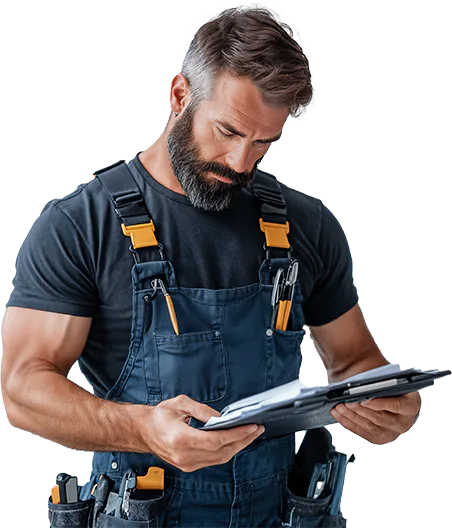Choosing the Right Tool for Gas Leak Detection: Why OGI Services are Essential for Hydrocarbons
In this article:
As fault detection tools evolve, so does the need to apply them wisely. Technologies like thermal cameras and acoustic imagers have reshaped preventive maintenance, but when it comes to detecting gas leaks—particularly hydrocarbons—no single tool fits all.
Among modern tools, Acoustic Imaging and Optical Gas Imaging (OGI) stand out. Each excels in specific applications, and understanding their capabilities ensures safe, efficient, and compliant leak detection.
OGI, in the hands of trained experts, is essential for detecting hydrocarbon leaks, while Acoustic Cameras remain the best fit for compressed air and other high-pressure gas applications.
Acoustic Cameras vs. OGI: Complementary, Not Competing
What Acoustic Cameras Do Best
Acoustic cameras detect ultrasonic sound generated by leaks or faults. They’re perfect for:
- Detecting compressed air leaks
- Locating vacuum system leaks
- Identifying partial discharge or arcing
- Spotting mechanical faults (bearings, cavitating pumps)
These tools are highly effective when there’s a distinct sound signature from a leak, such as in high-pressure air systems. They’re excellent for visualizing sound in real time across a wide area.
However, their effectiveness depends on one thing—sound. If there’s no ultrasonic signal, there’s nothing to detect.
Where Acoustic Cameras Struggle: Low-Pressure Hydrocarbons
In contrast to compressed air, many hydrocarbon leaks occur at low pressure—like small valve seepage or flange leaks. These often don’t produce enough acoustic turbulence to be picked up, especially in noisy industrial environments.
Additionally, acoustic imaging can’t differentiate between air, steam, or hydrocarbon gas, leaving critical questions unanswered about safety or compliance.
Why OGI is a Must for Hydrocarbon Leak Detection
OGI visualizes gas based on how it absorbs infrared radiation, making even silent, invisible, low-pressure leaks visible. It’s ideal for detecting:
- Methane
- Propane
- Butane
- Benzene
- Ethylene
Key Advantages of OGI Services
- Sees what sound can’t: Even quiet leaks at low pressure show up as infrared plumes.
- Unaffected by noise: Works in loud environments with no interference.
- Chemical-specific: Identifies type and volume of gas, aiding risk assessment.
- Non-contact & safe: Inspections from a distance, while systems stay live.
- Compliance-ready: Meets industry standards for LDAR and environmental safety.
When to Use What: A Practical Approach
| Feature | Acoustic Camera | Optical Gas Imaging (OGI) |
| Detects Compressed Air | ✅ Yes | ⚠️ Not optimal |
| Detects Hydrocarbons | ❌ No | ✅ Yes |
| Works in Noisy Areas | ❌ Often unreliable | ✅ Yes |
| Identifies Gas Type | ❌ No | ✅ Yes |
| Effective at Low Pressure | ❌ No | ✅ Yes |
| Visual Confirmation | ⚠️ Sound-based only | ✅ True infrared imaging |
| Compliance & LDAR | ❌ No | ✅ Yes |
Conclusion: Right Tool + Right Expertise = Reliable Leak Detection
Acoustic imaging is a powerful tool for detecting leaks in pressurized gas systems, compressed air lines, and electrical discharges. But when dealing with hydrocarbons, especially in low-pressure, flange, or valve leaks, only OGI can reveal the real risk.
That’s why facilities should consider integrated inspection strategies—leveraging acoustic cameras for compressed air and OGI for hydrocarbon detection, delivered by trained professionals who understand the behavior of each gas and system.
Let’s stop thinking either/or. The future of gas leak detection is both.
But when lives, assets, and compliance are on the line—OGI is non-negotiable.
Related articles

Need help? Want more information?
No matter the size of your organization, we’ll work with you to create the perfect plan that aligns with your goals and budget. Explore how IRISS solutions can transform your operations by providing unparalleled features and benefits. Contact us today to get started with a personalized quote!